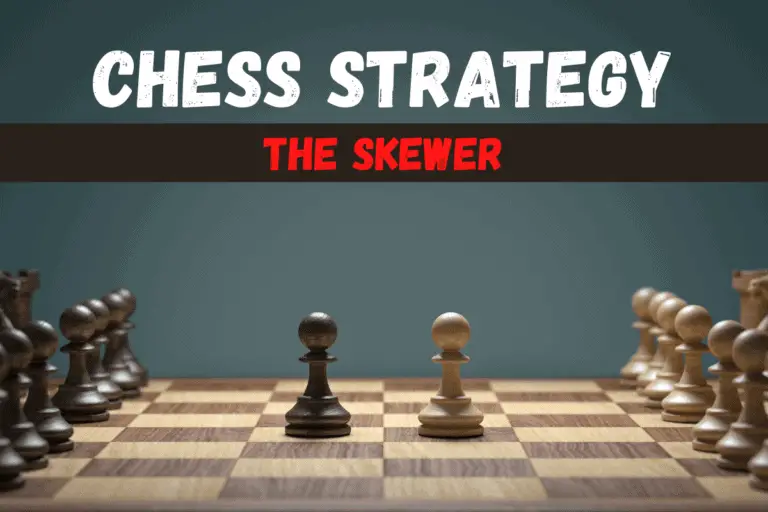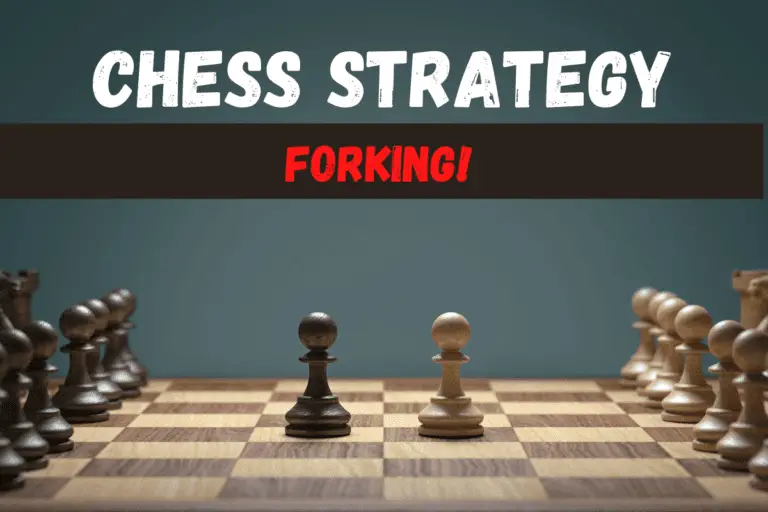The Art of En Prise: Chess Strategy for Beginners
⭐⭐⭐ Take 5 minutes to read and improve your chess game ➡️ : This article was first published on, and is Copyright of Chessquestions.com
Chess is a game of strategy and long-term planning. It has been around for centuries and its popularity continues to grow. In this article, I am going to focus on one particular type of chess tactic: En Prise.
What is En Prise?
This article will give you an introduction to what en prise is, why it’s important when playing a game of chess as well as how you can identify an undefended piece during a game or avoid it altogether. We’ll also talk about the different ways that en prise positions can be exploited by both sides in order to win more often!
En prise in chess describes a position of a piece that is undefended and can be captured without risk to the attacking players material in return. If you unintentionally place one of your pieces in such a position, you will have ‘put the piece en prise’ – It rhymes with cheese!
Read on for some examples of en prise, how to avoid it and loss of material, when to potentially use it to your advantage, and when not to take an en prise piece without consideration of a potential check or checkmate position against you.
Hang On – That’s Not Right
Well, it is true to say there is some argument with the above description being 100% correct and to some extent that could be true.
Whilst placing a piece that can be captured without danger to the taking piece, it could also be deemed En Prise if the square the piece has been moved to by the chess player is defended by a piece of lesser value than the piece which is now in a position to capture.
That’s an argument for another day, as to whether that situation is indeed en prise, or an ‘exchange’. I’ll leave you to debate that with anyone who cares,. whilst I go on to explain en prise as described above.
How to identify en prise
It is quite simple to identify a chess piece, either your own or opponents when ‘en prise’. The piece, whatever it might be will have just been moved into a position of weakness. A position whereby it can be taken by the opponent with zero risk that the capturing piece can be captured itself.
Whilst en prise was originally used to suggest a player had ‘unintentionally’ placed the piece at risk, modern chess tactics dictate this is not always the case. I will get into that more in a little while, but for now, in the most simple terms a chess piece in an undefended position is a piece for your attention.
A player should always be aware of the position and movement on their opponent’s side. This is because a piece that has just been moved into en prise can often mean an attack or threat from one direction, whilst another part to your chessboard might have become weakened in defence as they focus attention elsewhere! It pays not only for players but also spectators (like you!) To know what pieces are ‘en-prise’.
You should always consider all possible motives as to why your opponent has placed a piece ‘en prise’
- What is an unintentional mistake?
- Was it a purposeful sacrifice to draw your position and weaken your defence somehow?
- Or, was it unavoidable as you forced the situation in your attacking strategy?
How to avoid en prise
The way to avoid en prise is to consider every possible outcome regarding the piece you are moving and identifying if it is protected by another piece.
That is not to say, if avoidable, you should not place one of your pieces en prise. You may have your reasons. Be that to release a more powerful and versatile piece from a trapped position, to open up your attack. Or you may be doing so, to draw one of your opponent’s pieces out from its current defensive position to create a weakness, so you can begin an assault
So when is it a good idea to take an en prise piece?
The best time for taking an opponent’s piece is when you have the opportunity, and there are no other pieces in danger of being taken. This can be achieved by forcing your opponents into making mistakes or exploiting their weaknesses with threats that they cannot ignore
Using En prise in your chess strategy
As mentioned above, using en prise can be a way to open up the board when a mid-game stalemate and little advantage is swaying back and forth.
When your opponent places one of their pieces en prise, before identifying the absence of threat in making the capture, assess your current position, and what happens to other pieces in your line. Should you remove the piece that can capture the en prise material?
Have you opened up a line of attack that may cost you one of your pieces? And would your move leave another of your pieces ‘en prise’ and undefended?
There would be nothing worse than capturing an en prise bishop and leave your queen in the line of attack to be lost so cheaply.
It may be worth using the en prise in a potential exchange against one of your minor pieces. all these calculations have to be assessed in your had before making the move. Do not fall into the touch-move trap.
Is your opponent’s en-prise material of a lower value than the valuable piece you will lose? If so, then it may be worth capturing. However, if not and there is no other advantage to taking this move over any others that are available for capture in front or behind them on their line – do nothing!
This tactic can also work as an opening strategy when playing against someone who has been known (or suspected) to have poor defense skills at chess openings such as gambits where they often fall prey early game with little chance from recovering later into mid-game play because all pieces remain unprotected by pawns which would otherwise protect these lines.
When is en prise not en prise?
There may be a situation when at first it looks like your opponent has placed a piece, either a strong piece or one of the knights in en prise, whereby you could potentially move to capture. But it would not qualify as en prise if the only piece of material you could move is pinned and would leave your King in Check
Your opponent’s piece would not be in any danger in this scenario despite being on an undefended square.
The Origin of En Prise in Chess
According to Merriem-Webster, en prise was first used to mean ‘exposure to capture of a chess piece’ in 1820
It has since become a part of chess history and is used today as explained in this article
en prise translation
En prise translates literally to ‘In take’ which of course in English means nothing but can be understood as ‘in a position to be taken’ – the addendum of, ‘without jeopardy’ which signifies it would be a free capture is understood
en prise pronunciation
This is a good one, how to pronounce en prise. You don’t have to use a french accent, but it helps.
The first syllable is pronounced like the word ‘on’ in English. Prise sees the ‘i’ pronounced with long e sound similar to how it sound in ‘Grand Prix’ Then simply end the word like the ending of cheese.
Indeed, for Prise, see Preeze, but a softer ‘z’ like rhyming with ‘cheese’
en prise Summary
So now you know everything there is to know about en prise in chess, you can start playing and winning more games!
The Art of En Prise: Chess Tactics for Beginners is a blog post with an informative but in-depth explanation about what ‘en prise in chess’ is. Aimed at introducing en-prise to beginners discovering or learning basic chess tactics, the article includes origins & history as well modern use today – how you can identify its positions (and avoid them), take advantage when possible too.


![When to Fianchetto in Chess [Strategy]](https://chessquestions.com/wp-content/uploads/2021/03/fianchetto-featured-image-768x512.png)



